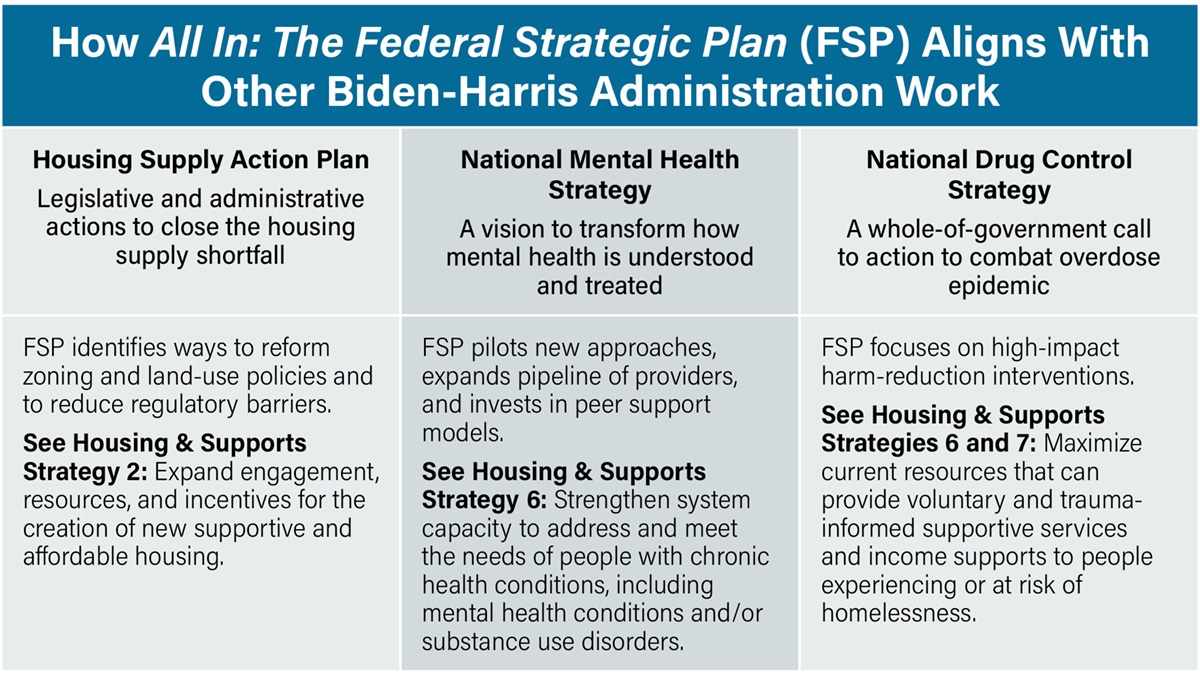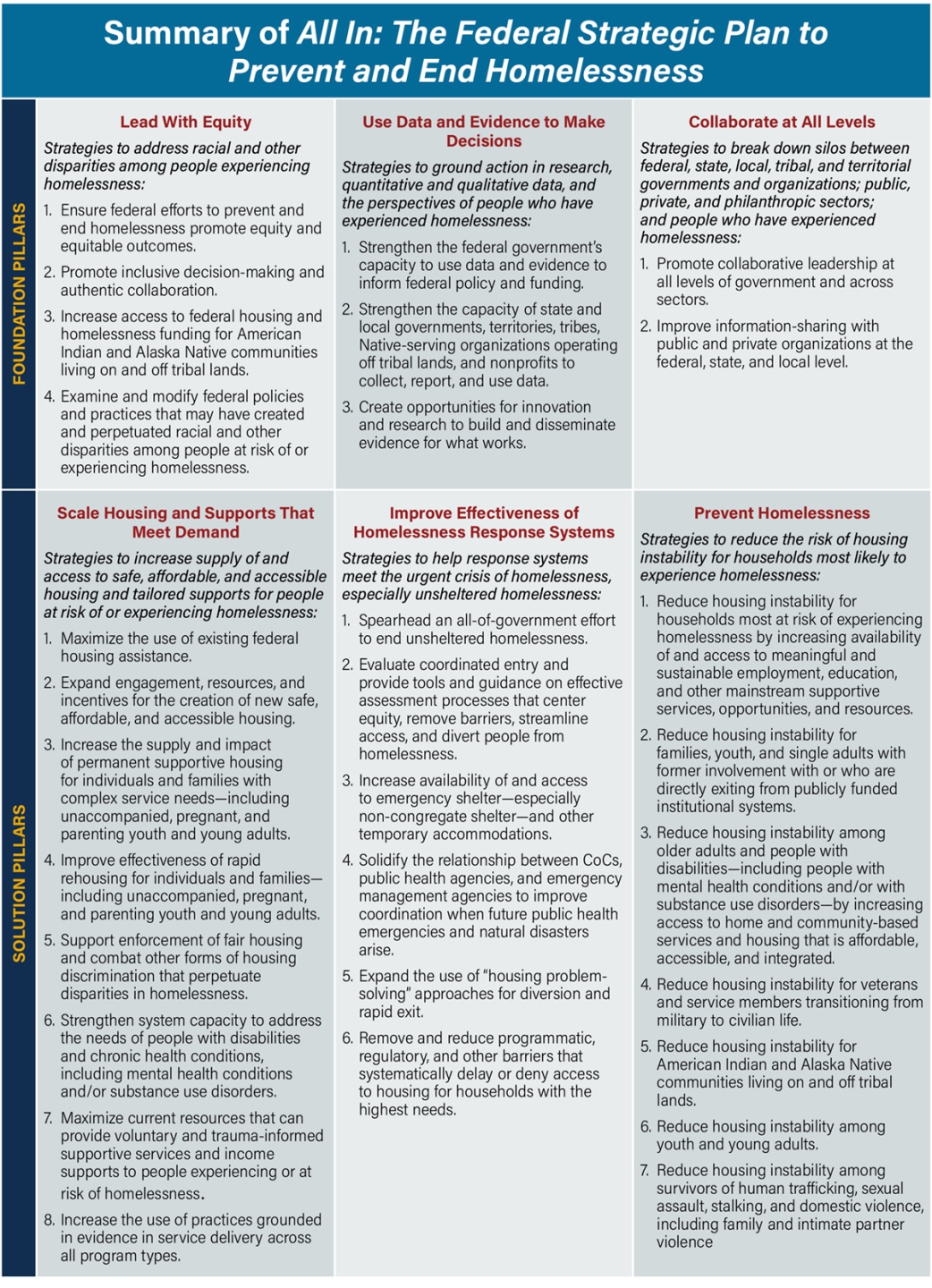Executive Summary
This is an excerpt of All In: The Federal Strategic Plan to Prevent and End Homelessness. Read the full plan at usich.gov/all-in.
After steady declines from 2010 to 2016, homelessness in America has been rising, and more individuals are experiencing it in unsheltered settings, such as encampments. This increase stems from decades of growing economic inequality exacerbated by a global pandemic, soaring housing costs, and housing supply shortfalls. It is further exacerbated by inequitable access to health care, including mental health and/or substance use disorder treatment; discrimination and exclusion of people of color, LGBTQI+ people, people with disabilities and older adults; as well as the consequences of mass incarceration. As our nation faces the growing threats of climate change, more Americans are being displaced from their homes and people experiencing unsheltered homelessness face even greater risk to their health and safety as a result of climate-related crises like wildfires, floods, and hurricanes. Even as homelessness response systems are helping more people than ever exit homelessness, more people are entering or reentering homelessness.
Homelessness has no place in America. All In: The Federal Strategic Plan to Prevent and End Homelessness (herein referred to as All In) is a multi-year, interagency blueprint for a future where no one experiences homelessness, and everyone has a safe, stable, accessible, and affordable home. It serves as a roadmap for federal action to ensure state and local communities have sufficient resources and guidance to build the effective, lasting systems required to end homelessness. While it is a federal plan, local communities can use it to collaboratively develop local and systems-level plans for preventing and ending homelessness. To reach the Biden-Harris Administration’s vision, the plan sets an ambitious interim goal to reduce homelessness by 25% by January 2025 and sets us on a path to end homelessness for all Americans.
To develop this plan, USICH undertook a comprehensive and inclusive process to gather input from a broad range of perspectives. Through more than 80 listening sessions and 1,500 public comments, USICH received feedback from organizations and people—including more than 500 who have experienced homelessness—who represent nearly 650 communities across nearly every state as well as tribes and territories. All of this input directly influenced All In, which was created by USICH with collective thinking of the 19 federal agencies that make up the council.
Within this plan, USICH is using the term “people of color” to be inclusive of all racial groups other than non-Hispanic white, including Black/African American; American Indian/Alaska Native; Asian/Asian American; Latino/a; and; Native Hawaiian or Pacific Islander. USICH acknowledges that the experiences of each of these groups is not the same and that the needs of each group must be uniquely considered and addressed upon implementation.
Although All In builds off former federal strategic plans to prevent and end homelessness, it is reflective of the Biden-Harris Administration’s priorities. It goes further than any prior USICH federal strategic plan to comprehensively advance equity and to address systemic racism and the ways in which federal policies and practices have resulted in severe racial and other disparities in homelessness. While other plans have mentioned homelessness prevention, this plan includes specific strategies focused on upstream prevention. And All In aligns with the administration’s existing work to transform social service systems—including the National Mental Health and National Drug Control strategies. This plan also builds upon the national Housing Supply Action Plan that seeks to close the housing supply gap in the next five years.
Ending homelessness requires an all-hands-on-deck response grounded in authentic collaboration. Upon release of this plan, USICH will immediately begin working with federal partners as well as local and state entities in the public and private sectors to develop implementation plans that will identify key activities, milestones, and metrics for making, tracking, and publicizing progress. USICH will regularly measure progress and update the implementation plans. The plan itself, All In, will be annually updated to reflect evolving evidence, input, and lessons.
This plan is built around three foundational pillars—equity, data, and collaboration—and three solution pillars—housing and supports, homelessness response, and prevention. Each pillar includes strategies the federal government will pursue to facilitate increased availability of and access to housing, economic security, health care, and stability for all Americans.




